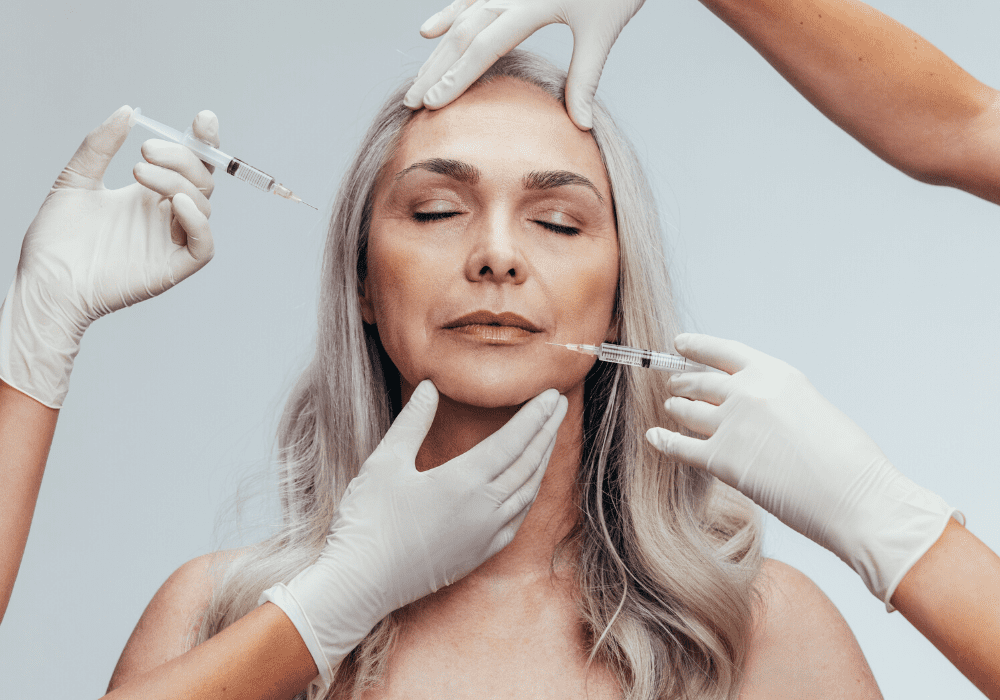
Dermal Filler
What is dermal filler?
With aging, the reduction of hyaluronic acid, elastic fibers, collagen fibers, and fatty tissue leads to a loss of skin elasticity and vitality, resulting in wrinkles and sagging.
As we age, changes in facial appearance become noticeable. The hollows around the eyes become more pronounced, eyebrows slightly droop, cheek volume decreases and shifts downward due to gravity. Folds form from the sides of the nose to the corners of the mouth and from the mouth to the chin, lips lose volume, the corners of the mouth turn downward, the jawline contour becomes less defined, and fine wrinkles appear on the neck.
When Should I Get Fillers?
What Are the Application Areas for Fillers?
Filler injections are used to reduce facial sagging, treat forehead lines, frown lines between the eyebrows, wrinkles around the mouth, nasolabial folds (from the sides of the nose to the corners of the mouth), marionette lines (from the mouth to the chin), enhance cheekbones, define and add volume to lips, and address acne scars and other scars. Beyond the face, filler injections can also be used to rejuvenate aging hands, neck, décolleté, and even the chest area.
Permanent fillers are less preferred due to potential side effects such as allergies, lumps, or hardness. Nowadays, fillers containing hyaluronic acid—a substance naturally found in the dermis layer of the skin that provides moisture, fullness, and vitality—are most commonly used. This essential component, which decreases with age, retains water to provide moisture and volume to the skin. There are numerous filler products available on the market. The choice of filler depends on the application area and the viscosity of the filler. More fluid fillers are used in areas with thin skin, such as around the eyes, while fillers with higher viscosity are used in areas like the cheeks where a volumizing effect is needed.
How Are Filler Applications Performed?
What Should I Pay Attention to After the Procedure?
After applying an anesthetic cream to the skin, the area is cleaned with disinfectant solutions, and the filler is injected using fine-tipped syringes or special cannulas. The procedure takes approximately 20-30 minutes. Temporary fillers last an average of 12 months. In mobile areas like the lips, the effect lasts 6-8 months, while in the cheeks, it can last up to 18 months. A gentle massage after the procedure helps the filler settle. Post-procedure, avoid heavy exercise and hot showers. Temporary swelling, redness, bruising, or sensitivity may occur at the injection site. These side effects can be minimized with ice application and typically resolve quickly. Bruising can be concealed with makeup. The use of painkillers other than paracetamol or blood thinners before the procedure is not recommended.
You can click here to return to the homepage.
